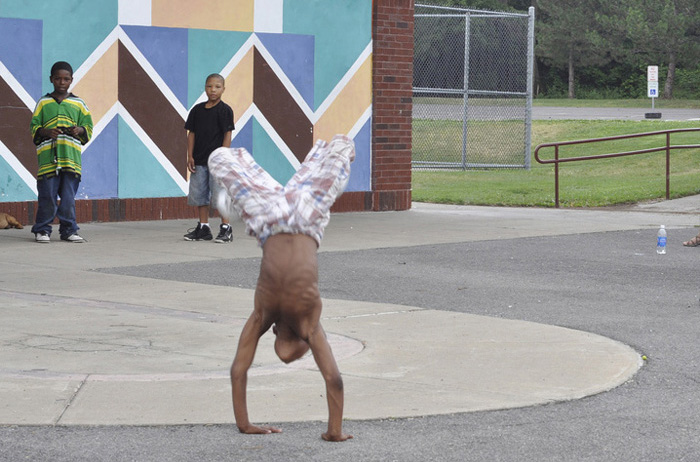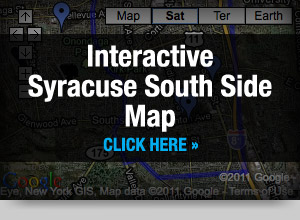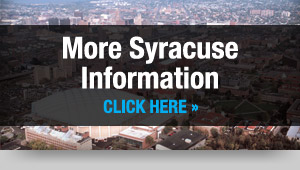The World Journalism Project
Department of Newspaper and Online Journalism
The S.I. Newhouse School of Public Communications
About this story
Author: Sierra Jiminez
People: Participant Lauren Rosenstein captured the moment shown at right this past summer during a Saturday walk through the South Side.
Data points: Some 46.9% of South Side homes are owner-occupied and 53.1% are renter-occupied. South Side population, 2002: 20, 592. 52.6% were black, 44.4% white.

About the South Side: Spirit prevails
By: Sierra Jiminez
The South Side of Syracuse is a community of some 20,000 people looking for a fresh start.
It is high on spirit — but a little low on resources.
If you are not familiar with the South Side, you can look to a major construction project in the 1960s as a start for your primer.
According to a 2003 article in the local newspaper, The Post-Standard, then-Syracuse Mayor William F. Walsh used funds from a federal “urban renewal” program to run the path of Interstate 81 through the city, and also make room for Upstate University Hospital and a brand-new police headquarters.
The developments displaced nearly 1,300 residents from the old 15th Ward, a predominantly African-American community. As a result, the once-vibrant and close-knit community was divided, and separated from the Syracuse University campus.
“It was really frightening to some because they had to pick up and move,” said Mike Atkins, former Common Councilor for the Fourth District. “There was no plan or geographic area that was allocated for people move to.”
According to Atkins, the relocation of 15th Ward residents caused wealthy, largely white families to move out as their new neighbors moved in.
“Back in those days, people just said ‘I don’t want those people moving into my neighborhood,’” Atkins said. “So you can imagine an adult African-American, what they had to go through in trying to negotiate moving into another neighborhood.”
Nearly 50 years later, the South Side is still recovering.
“It created two cities,” said Van Robinson, president of the Syracuse Common Council. “One on the east, which is a continuously building community. And on the West, abandonment, displacement and an economic desert.”
Despite the efforts of many nonprofit organizations, some of the needs of the South Side residents and businesses outnumber the resources available.
“We’ve seen a need. But do we get our fair share of taxpayer dollars? Absolutely not,” said Walt Dixie, director of Time of Jubilee, a nonprofit corporation that builds affordable housing.
Dixie said since the corporation was formed in 1987, Time of Jubilee has helped build more than 90 houses on the South Side. And as the needs of the community have evolved, so have the programs Time of Jubilee and other nonprofit organizations offer.
“What we’re doing is pretty much a Band-Aid approach,” Dixie said. “There’s a lot we need to do.”
In 2005, a study conducted by MetroEdge, a community development company that specializes in urban markets, concluded that the main retail center of the South Side was “desirable for both future retail development and continued investment by current businesses.”
The area, a 1-square-mile section of the South Side called the South Salina Trade Area, is bounded by Adams Street on the north, Brighton Avenue on the south, Midland Avenue on the west and I-81 on the east.
In 2006, the city of Syracuse designed the South East GATEWAY Neighborhood Design Plan — designed to create accessible retail on the South Side.
“It was a model of what the area should be like, and what the South Side can be if we show interest,” Robinson said. But despite the proof of potential in the area, Robinson said developers he has spoken to aren’t following through with the GATEWAY plan.
“That day will come and I think what we have to do is be creative and we can make some good things happen on the South Side and make a person proud to be called a South Sider,” Robinson said.

